
Co-living is fast becoming one of the most popular ways for young NYC residents to live in a shared space with a supportive community.
The rental market in New York City is rapidly changing. Rising rents, increased demand for luxury housing, and an increasingly mobile population have turned New York’s housing market towards a share-driven economy. New York Habitat has been offering roommate shares in New York City since 1992, but as the rental economy changes, we are excited to examine the new frontier in shared housing: co-living.
Co-living is a relatively new concept, but it’s rapidly gaining traction in New York’s shared housing market. Several different groups are aligning in their excitement to introduce New Yorkers to the concept of co-living, including New York City’s Division of Housing Preservation and Development, property management companies, and of course us at New York Habitat! Before we introduce everyone, let’s get a grasp of the basic idea: What is co-living, and why now?
From the office of the mayor: New York City seeks a solution to affordable housing demand

As affordable housing becomes more scarce in New York City, city officials turn their sights towards co-living as a creative solution. (Photo credit: Daryan Shamkhali)
As rent rises and demand grows in New York, the city’s government faces a new challenge: providing affordable housing options to its citizens. New York City Mayor Bill DeBlasio was elected with the goal of creating 300,000 new affordable housing units in NYC. With this in mind, DeBlasio and NYC HPD (Housing Preservation and Development) launched the ShareNYC program, a new government-sponsored co-living development project, in November 2018.
ShareNYC offers to incentivize housing developers with public funding to build co-living units, especially income-restricted units for lower-income tenants. The announcement event was well-attended, showing off the city real estate community’s interest in the co-living frontier.
Proponents of the shift in focus towards co-living say that the initiative hearkens back to the days of New York’s high stock of SROs (single-room occupancy units), which were popular in the 20th century as an affordable living option for new immigrants to the city. Co-living is also touted as an ideal model for the modern, mobile lifestyle that many young professionals live.
“Shared housing has a long history in New York City and in big cities throughout the world,” said HPD Commissioner Maria Torres-Springer. “With our new ShareNYC initiative we’re looking to reinvent, reimagine, and reshape this model into a dynamic new form of affordable housing for New Yorkers.”
So what does co-living look like, and what makes it so buzzworthy for New Yorkers? We at New York Habitat are excited to announce our new partnerships with co-living property management companies, meaning we can now introduce you to the concept firsthand!
Co-living: A modern take on rental housing
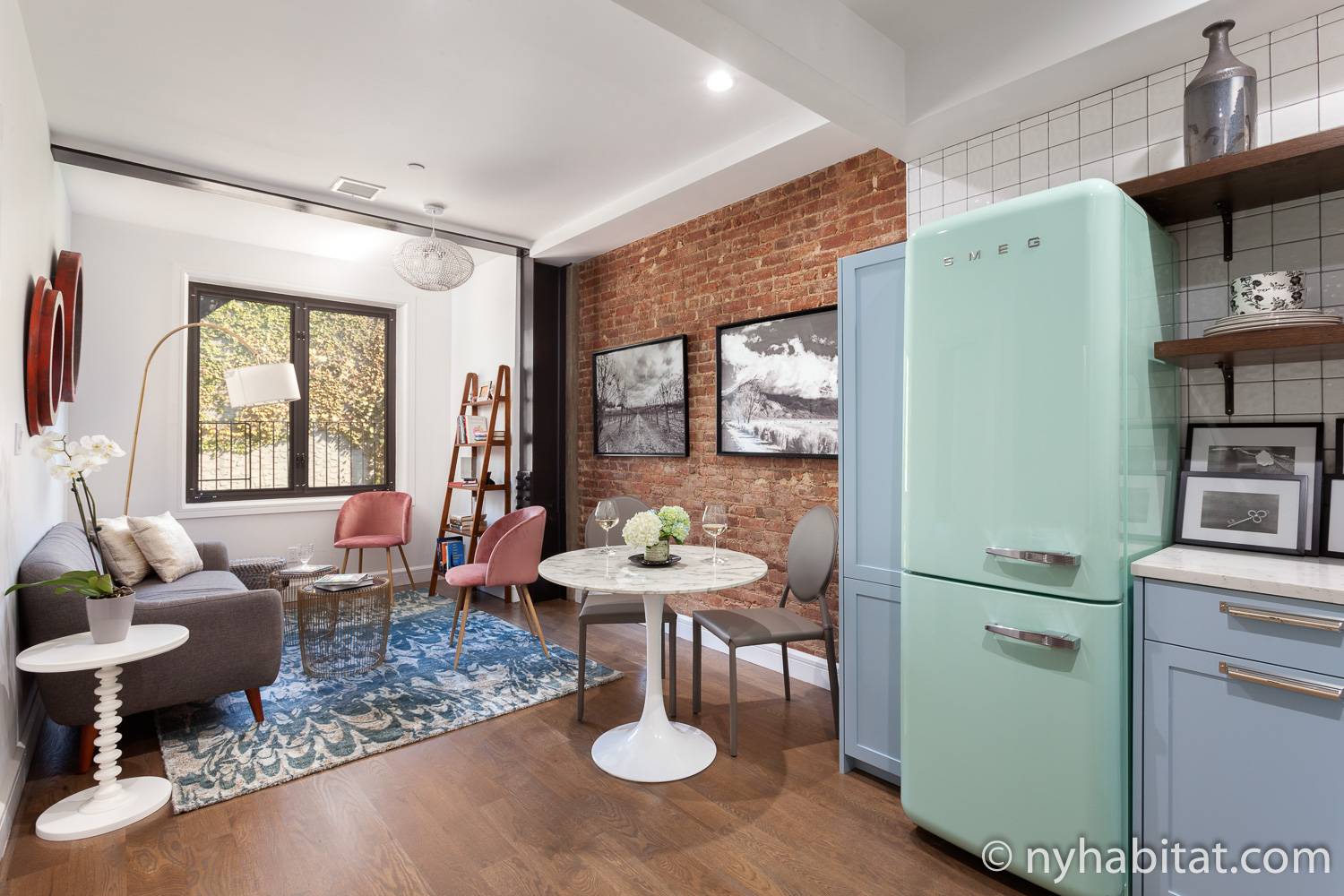
New York Habitat’s new co-living spaces are designed with high style and state-of-the-art electronics to make shared spaces functional and trendy. (Rental ID: NY-17858)
Co-living, by definition, is designed to create an instant cooperative community for tenants. In a traditional roommate share, roommates may share a space, but be on completely different schedules or lead drastically different lives. They also tend to all cosign one lease that starts and ends within a set time frame.
While a roommate share can be a great model for certain personality types and short-term relocations, many modern professionals, especially young people, are more likely to live a mobile lifestyle in which they travel between cities frequently and have fewer possessions with them. Additionally, younger generations tend to be single for a longer period of time, and trying to secure a solo apartment can be lonely or cost-prohibitive, inspiring them to search for roommates or apartment share situations.
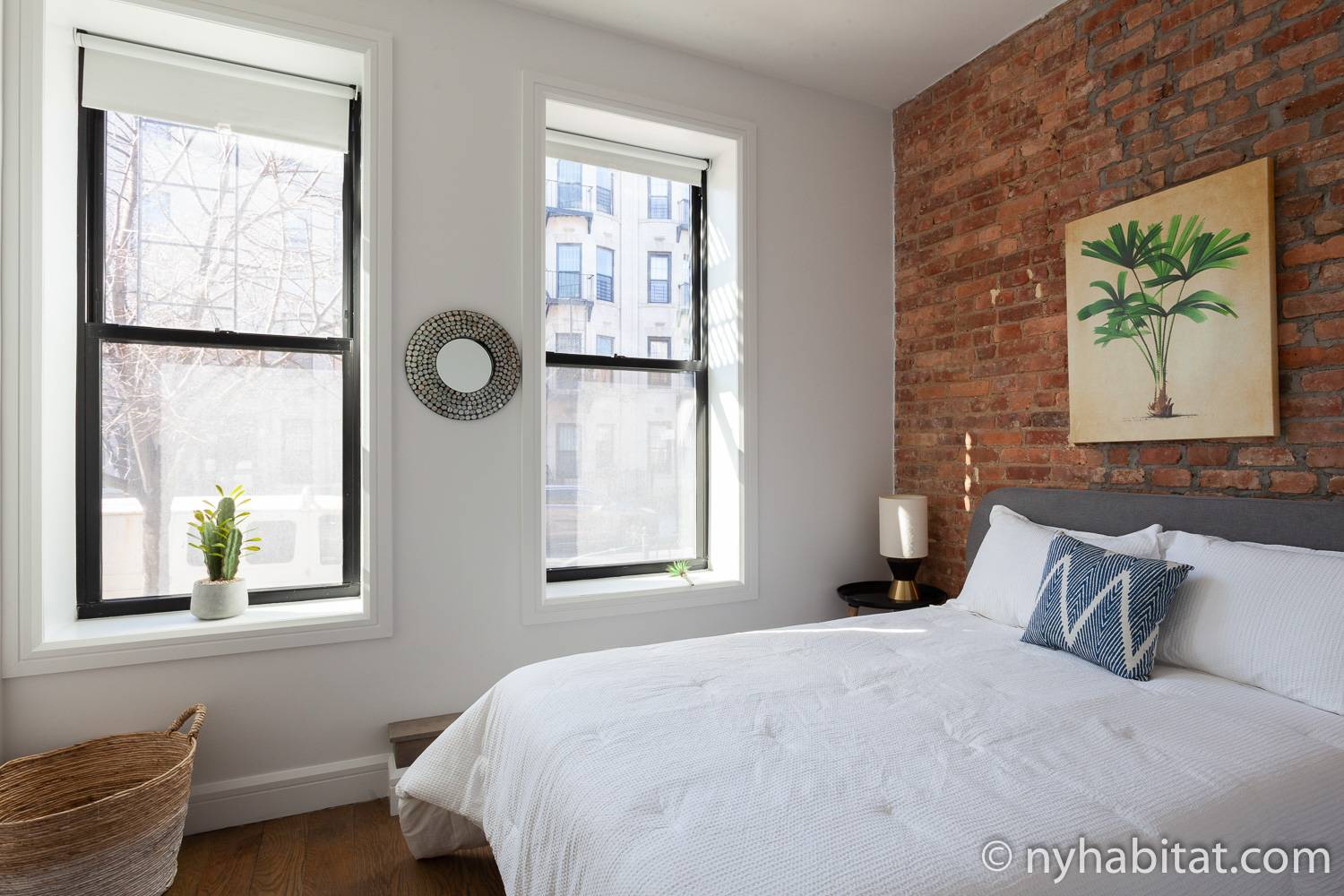
Co-living apartments are rented by the room and designed to provide a tranquil escape when you need some personal space. (Rental ID: NY-17871)
The demand for more flexible and curated shared living accommodations is where co-living enters the picture. When a new resident moves to a new city, co-living is there to provide them with a flexible living situation that creates an instant sense of community. Our new co-living partners offer their co-living units completely furnished with top-of-the-line appliances and expertly coordinated style, eliminating the need to drag around furniture from city to city and hire expensive movers.
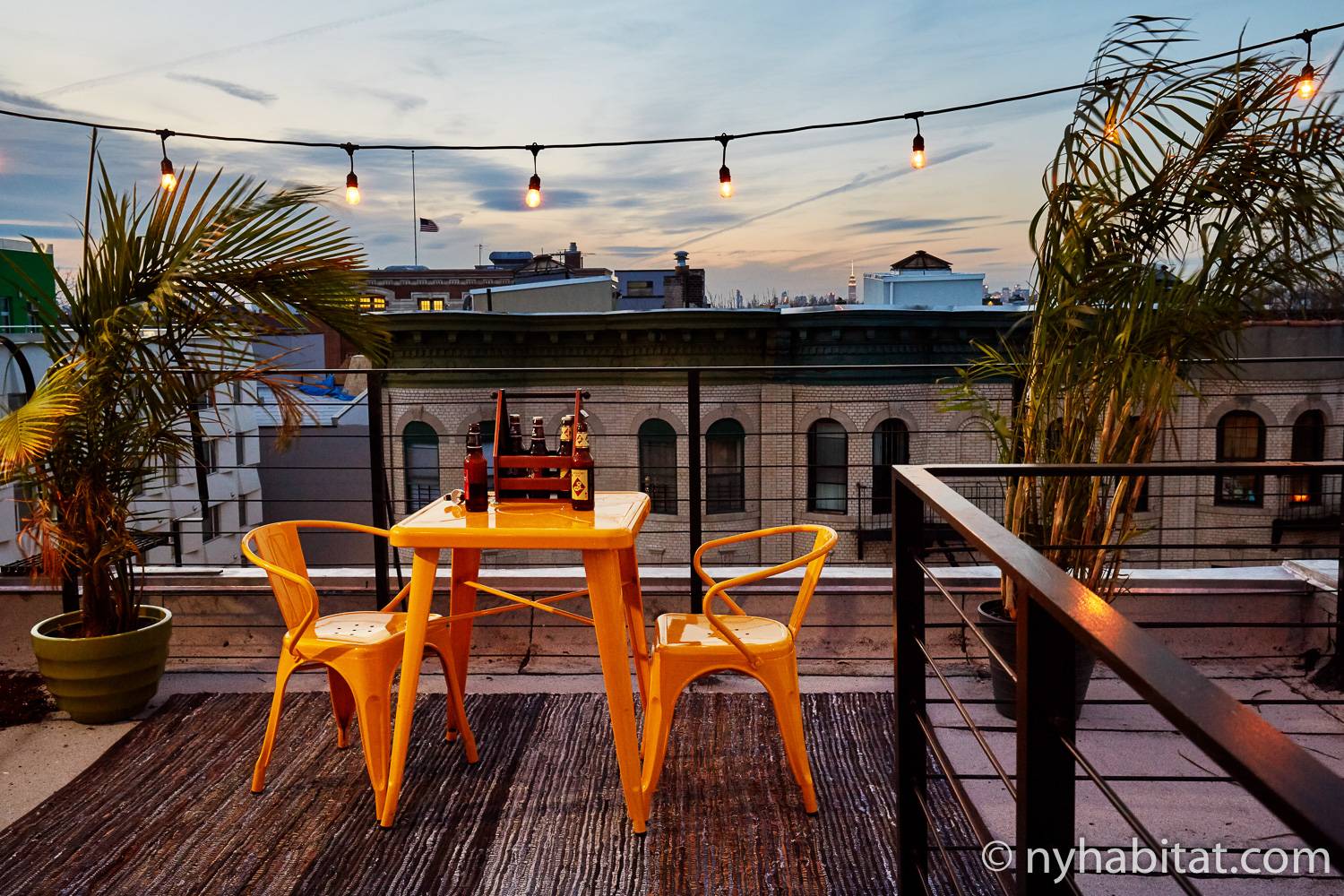
Co-living properties have common social areas like rooftops for a memorable night of mingling with roommates and watching the sunset over the NYC skyline! (Rental ID: NY-17871)
The co-living model allows tenants to rent rooms individually while sharing a kitchen and often a bathroom. Our New York co-living properties now available in Bushwick, Brooklyn also offer community areas (rooftops, backyards, lounges) for all tenants of the building to mingle and socialize. Because apartments are leased by the room, co-living has some unique mutual benefits:
- Co-living offers flexibility and a finely furnished space that’s an instant welcome for new residents of a city.
- The focus on community allows young people to nurture social connections instantly, even in a new environment.
- The units are designed to be an affordable alternative to renting a full apartment.
- Co-living also benefits the city, as it offers living accommodations to more people in a smaller space.
There are more newly-constructed apartments, communal apartments, and types of roommate shares available in New York every year, but the co-living approach to building a community is particularly unique.
Curating a community: The co-living approach
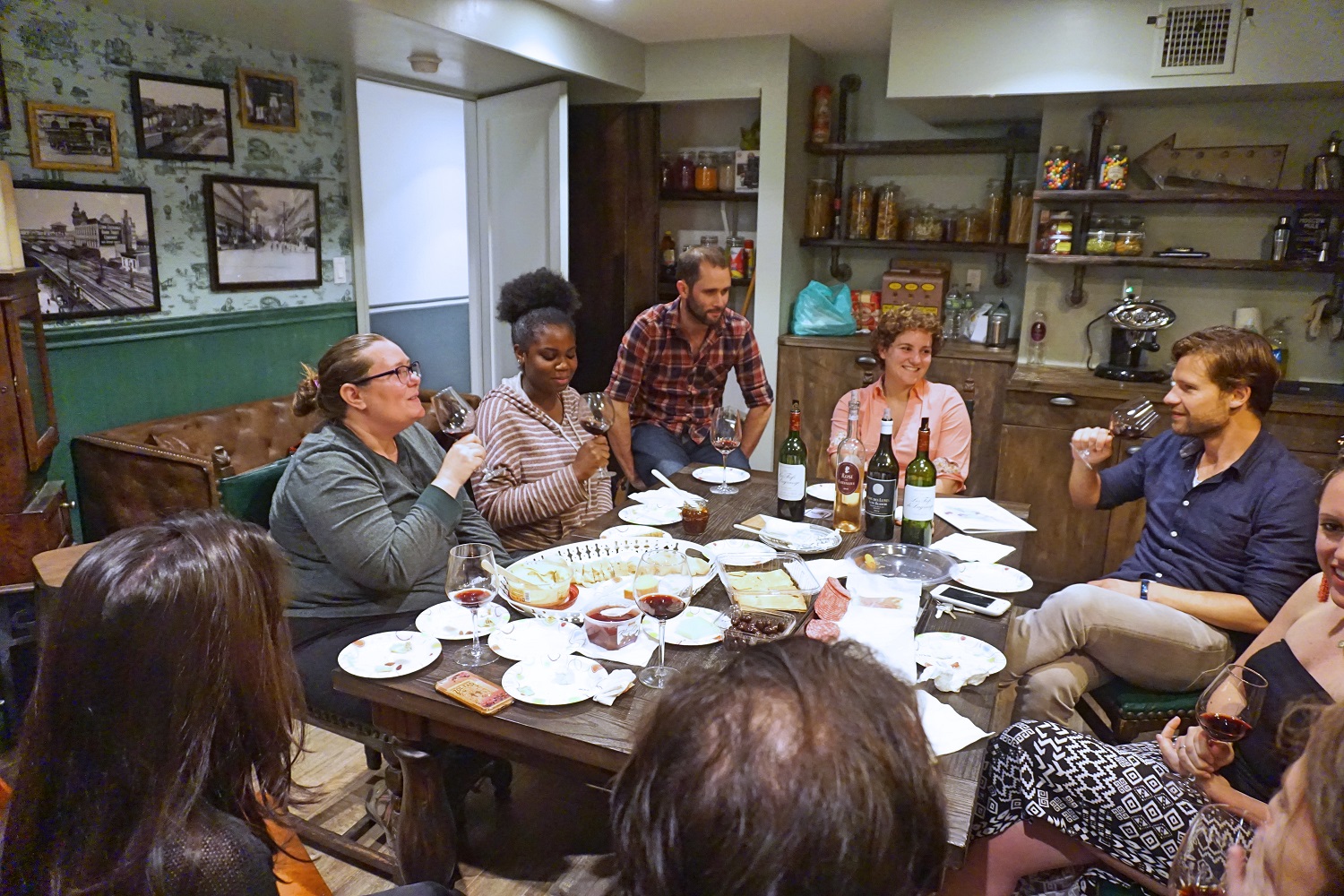
Community events for co-living residents create a social vibe and a welcoming environment that elevates an apartment beyond just being a place to lay your head.
In addition to enjoying flexible accommodations, tenants in co-living properties are encouraged to cultivate connections. Some co-living properties features curators who host events, activities and socials designed to help tenants meet and mingle with their neighbors and get to know each other. Co-living is also growing internationally, with communities in London, Dublin, Seattle, Toronto, and Los Angeles. As New York Habitat is an international company, we look forward to exploring additional co-living partnerships in Paris and London!
For now, through our exciting partnerships in New York City, you can rent a co-living apartment with the help of a licensed agent. Enjoy a sense of connection during the rental process from beginning to end!
Because co-living aims to foster community, the units are best for tenants who are looking to relocate to New York for a longer period of time. If you’re renting with New York Habitat in New York for a year or longer, ask your agent about a co-living apartment; it might be a good choice for you!
New York Habitat pioneers co-living in Brooklyn
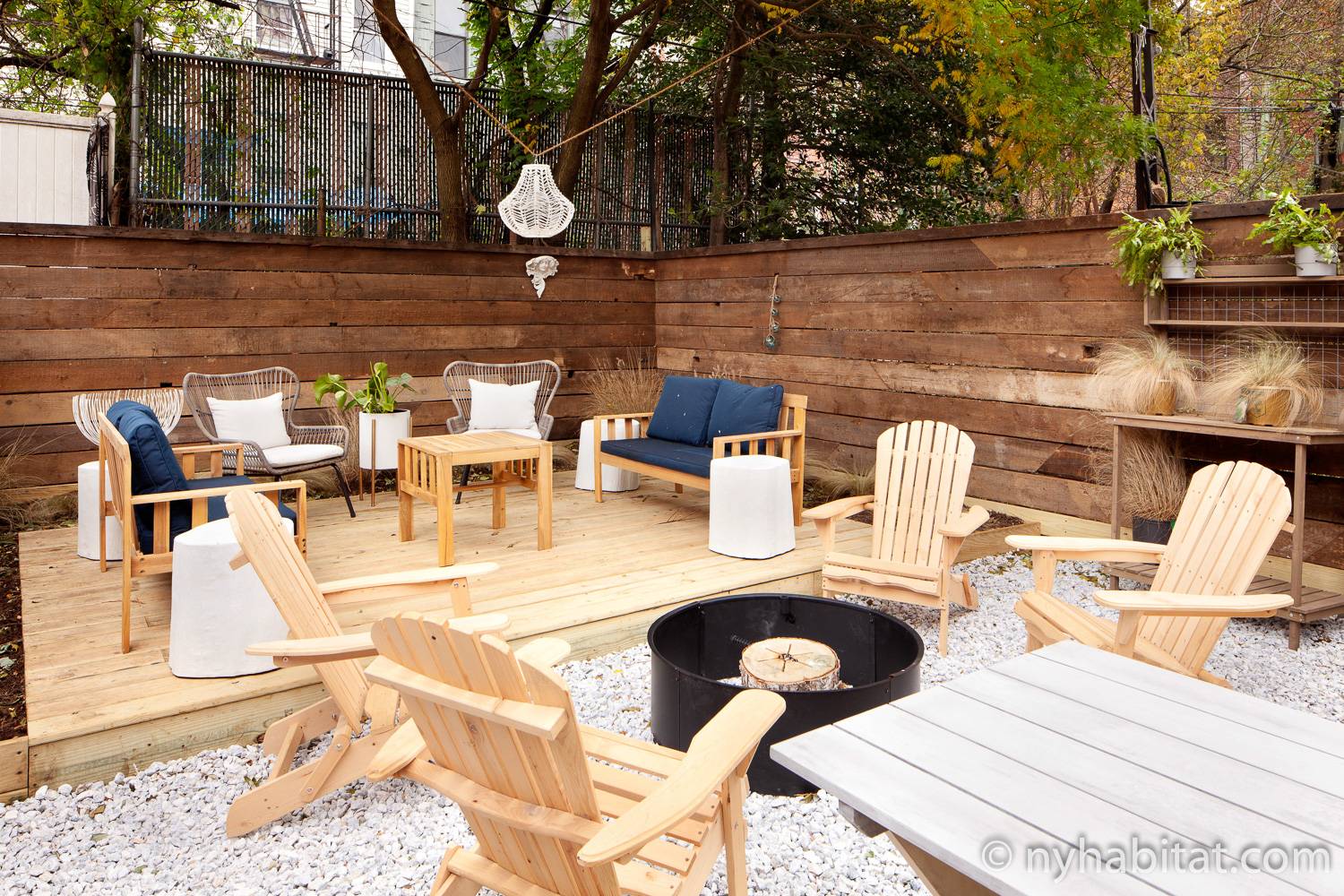
Imagine the possibilities in a curated, social co-living space! (Rental ID: NY-17881)
New York Habitat is excited to get in the spirit of connected living! We aim to provide tenants and travelers with quality furnished apartment rentals in New York, Paris and London. The agents in
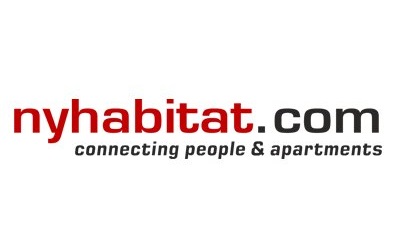
It’s in our motto—New York Habitat connects people during the rental process!
our roommate share department match roommates and apartment owners based on their unique needs, and the overall focus of our agency is to “connect people and apartments” and to facilitate connection and communication between all parties on a lease.
Our vision for furnished rentals came from the desire to provide travelers with personalized accommodations in destinations around the globe that are fully-furnished and ready for move-in. We strive to offer flexibility and personalization to all of our clients. This made investing in the concept of co-living a no-brainer!
Sabrina Dargos, New York Habitat’s Product Manager, shares our feelings about the collaboration in her own words:
“New York Habitat has been offering apartment shares for years. But the collaboration allows us to offer a more modern way of living to our clients. Each co-living space was wonderfully designed to bring people together and is great for anyone wishing to embrace a more connected way of living. Through their home, they are connected to people of different ages and cultures with whom they share values such as openness, social networking and collaboration.”
The door opened by this new partnership is part of an ongoing mission to foster connection in an increasingly globalized world and adapt to the dynamic modern real estate market. With the advent of co-living in New York City on the horizon, we look forward to this opportunity to collaborate and connect our clients with a tailored, modern, one-of-a-kind living experience. According to New York Habitat agent Beth Weiler, New York City is the perfect environment for co-living!
“With so much going on in NYC, one may not focus as much on cultivating the positive effects of community within the home. But why not have both? [Co-living] puts attention to optimizing the living experience with community events and respectful attention to roommate matching. This makes a valuable addition to NYC’s housing options, and I’m excited to work with them to expand and cultivate positive living experiences.”
If you’re interested in learning more about renting a co-living unit through New York Habitat, submit a request to speak to an agent and start your journey into curated co-living!




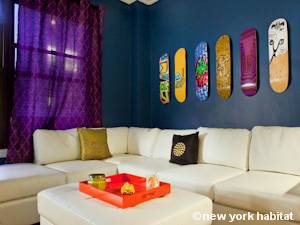
Leave a Reply